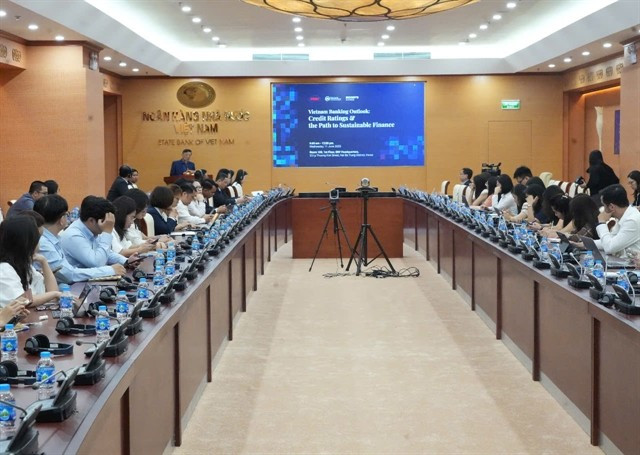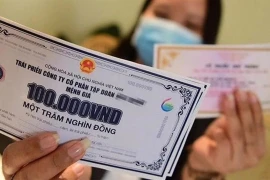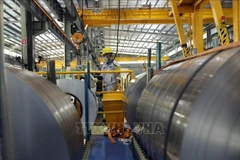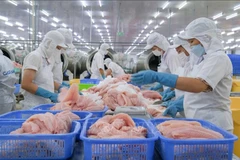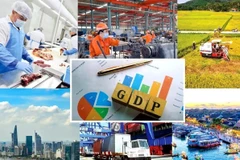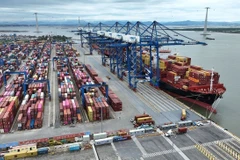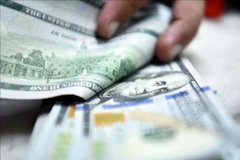Hanoi (VNS/VNA) - The outlook for Vietnam's banks in 2025 is stable, but challenges remain, especially risks from real estate and liquidity pressure at some small-scale banks, experts said at a conference on June 11.
At a conference titled ‘Vietnam banking outlook: credit ratings and the path to sustainable finance’ held in Hanoi, Dr. Nguyen Quoc Hung, Vice Chairman and General Secretary of the Vietnam Banks Association (VNBA), said this year the Vietnamese banking industry will face both opportunities and challenges as the economy gradually recovers and stabilises after the fluctuations of 2024.
According to the Asian Development Bank (ADB) report on Vietnam's financial market in 2025, the creditworthiness of Vietnamese banks is expected to improve slightly, led by State-owned banks and some large commercial banks. The business environment is gradually being strengthened thanks to the promotion of public investment, stable foreign direct investment (FDI) flows and supportive legal policies from the Government.
According to Hung, credit growth is expected to reach 15-16%, supported by long-term borrowing demand in the fields of production, trade, construction and real estate. Meanwhile, net interest margin (NIM) is forecast to rise by 5-10 basis points to 3.5% in 2025, thanks to better control of funding costs.
“A bright spot in the banking industry outlook for 2025 is the improvement in asset quality," he said.
"The bad debt ratio is expected to decrease thanks to better control of the loan portfolio and more effective debt handling by large banks. The Government is also implementing many policies to address legal issues related to collateral and bank rights, which are expected to help credit institutions reduce legal risks when handling debt.”
However, he notes that potential risks remain in the banking industry, especially risks related to real estate. Some small- and medium-sized banks, which have high loan ratios to real estate developers, are facing difficulties and it could put pressure on their asset quality. Meanwhile, large banks have an advantage by focusing on lending to manufacturing and commercial businesses.
The overall banking sector’s profitability in 2025 is forecast to improve slightly, with return on assets (ROA) increasing from 1.55% to 1.60%. This growth comes from expanding profit margins, helping banks increase income from lending. NIM is expected to reach 3.5%, up from 3.4% in 2024; while non-interest income is expected to increase slightly thanks to bond trading, debt collection and insurance sales. Total revenue from these sources this year could increase by 5-7% compared to last year. Credit costs are also expected to decrease, especially in the group of State-owned and large banks, as asset quality is improved.
“In addition, digital business and digital transformation continue to play an important role. Banks are investing heavily in digital platforms to increase customer reach, reduce operating costs, and improve operational efficiency. It is forecast that digital banking transactions will account for more than 70% of total transactions by the end of 2025,” Hung said.
Speaking at the event, Alka Anbarasu, Associate Managing Director, Financial Institutions, Moody’s Ratings, said: “Vietnam's economic growth will remain at somewhere around real GDP growth of 5.5% over the next two years. This follows a very strong growth in 2024, with real GDP growing at around 7% in 2024. We do note that perhaps the target the government has set here is for 8% real GDP growth, but clearly in the near term, there are some uncertainties arising from the US tariff impact. But despite that, we think the country's real GDP growth will remain in the 5-per cent range, which is quite healthy compared to most of the peers in the region.”
“For Vietnam, we think the two factors, despite the macro uncertainty, will persist. One is that Vietnam remains a very strong channel for FDI inflows, and that has boosted domestic production and productivity of the country. But even tourism inflows are extremely strong in Vietnam, supporting the local economy and further boosting the growth here. Nevertheless, from a global perspective, clearly the export outlook is uncertain until the tariff negotiations are complete.”
According to Anbarasu, the outlook for Vietnam's banks is stable. Most of the areas, except asset risk, where Moody’s has concerns, are stable. Vietnamese banks have now built some buffers, so their profitability will remain stable. The non-performing loan (NPL) ratio, if including specially mentioned loans, has broadly remained stable over the years at around 2%.
However, she notes: “Our main concern remains around the real estate sector and its recovery because we think for now banks have continued to support the sector and the sector is gradually recovering, but in that process we think there is some uncertainty for the banking sector from at least their exposure to the real estate sector. Also, the banks' buffers for NPLs have come down.”
“From a global macro-economic perspective, we do have some concerns on global growth and we expect that some of those will trickle into most of the countries globally. For banks in Vietnam, we think asset risk from the real estate sector remains, perhaps at least from our perspective, the key credit concern. But we think that banks' profitability and capital do provide them adequate buffer against the risk from these uncertainties,” Anbarasu concluded./.

Banks leverage national data integration to reach customers
Access to this massive amount of data allows banks to expand their digital offerings, particularly online lending.
